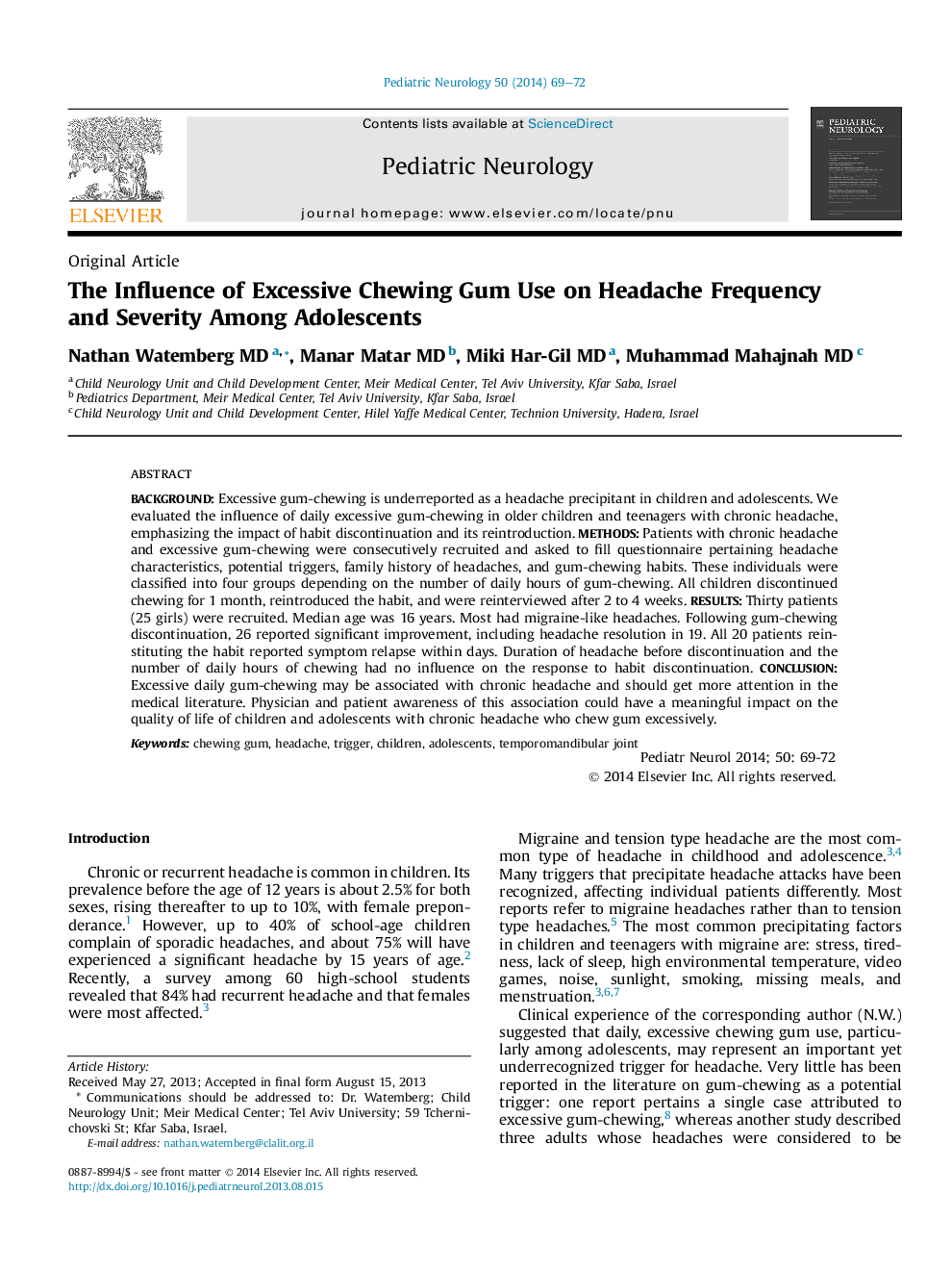| Article ID | Journal | Published Year | Pages | File Type |
|---|---|---|---|---|
| 3085119 | Pediatric Neurology | 2014 | 4 Pages |
BackgroundExcessive gum-chewing is underreported as a headache precipitant in children and adolescents. We evaluated the influence of daily excessive gum-chewing in older children and teenagers with chronic headache, emphasizing the impact of habit discontinuation and its reintroduction.MethodsPatients with chronic headache and excessive gum-chewing were consecutively recruited and asked to fill questionnaire pertaining headache characteristics, potential triggers, family history of headaches, and gum-chewing habits. These individuals were classified into four groups depending on the number of daily hours of gum-chewing. All children discontinued chewing for 1 month, reintroduced the habit, and were reinterviewed after 2 to 4 weeks.ResultsThirty patients (25 girls) were recruited. Median age was 16 years. Most had migraine-like headaches. Following gum-chewing discontinuation, 26 reported significant improvement, including headache resolution in 19. All 20 patients reinstituting the habit reported symptom relapse within days. Duration of headache before discontinuation and the number of daily hours of chewing had no influence on the response to habit discontinuation.ConclusionExcessive daily gum-chewing may be associated with chronic headache and should get more attention in the medical literature. Physician and patient awareness of this association could have a meaningful impact on the quality of life of children and adolescents with chronic headache who chew gum excessively.
